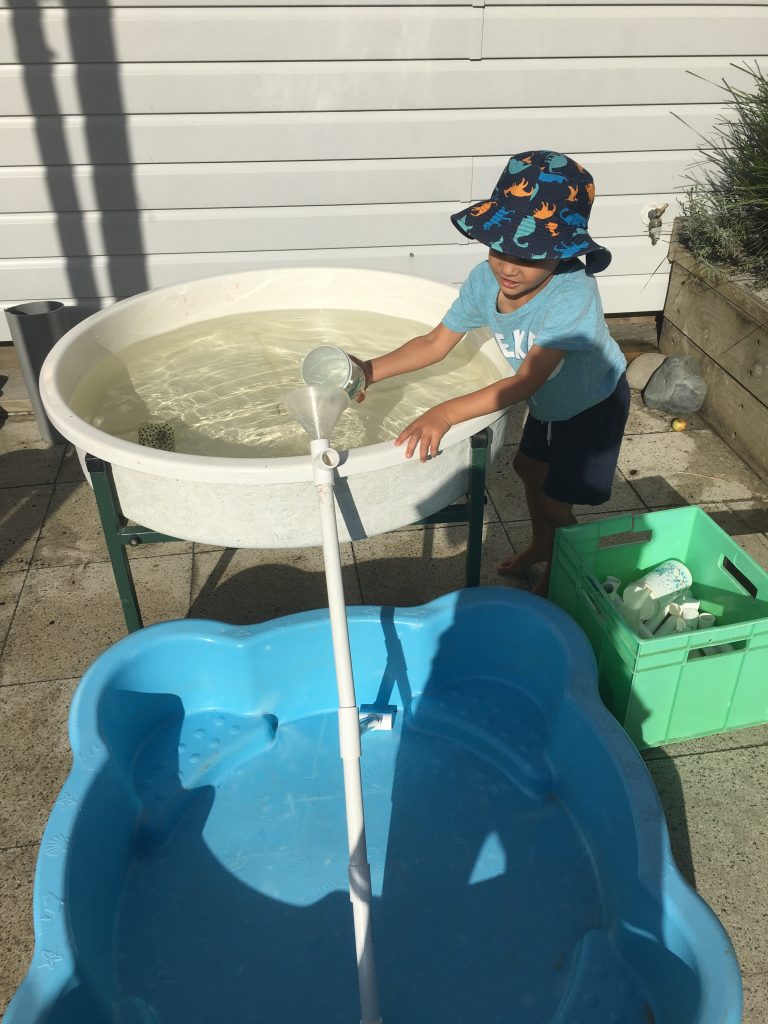
Today, there were two water troughs outside, the higher one filled with water and the lower one totally empty, with a simple pipeline leading from one to the other.
13th February 2024 – Captured by Kaiako Kate
Transportation is a schema (this is a behaviour we see repeatedly) characterised by moving objects/ substances from one area to another. The transformation schema relates to your interest in how you can manipulate and change things/ substances, like mixing water and sand. Construction is a great example.
Today, there were two water troughs outside, the higher one filled with water and the lower one totally empty, with a simple pipeline leading from one to the other. Alongside was a box of pipes. With your hat and sunscreen on you made a beeline (that is, went directly) to this activity. Filling a water bottle and pouring water into the pipe “It’s too hard”, you exclaimed, as more water was spilling out than going into the pipe. I wondered what we could do to make it easier, we puzzled about this for some time before you saw a funnel. With a BIG smile you inserted it into the pipe and the bottom trough began to fill.
Having had a quick korero with your Mum, transportation schema is a strong area of play at home too. Ivar, it is amazing to see how much you have grown since I was here as a student teacher. I remember your puzzling skills very well. It is great to see you use these skills in other areas of learning and learning to problem solve with less frustration and just a little support from kaiako.
I was so impressed by your determination, persistence and problem solving in creating a stable pipeline that you and your friends could enjoy. We will continue to provide you with opportunities to refine your working theories in this area of play. The more often you explore and investigate the transportation schema, the more confident in your constructions you will be.